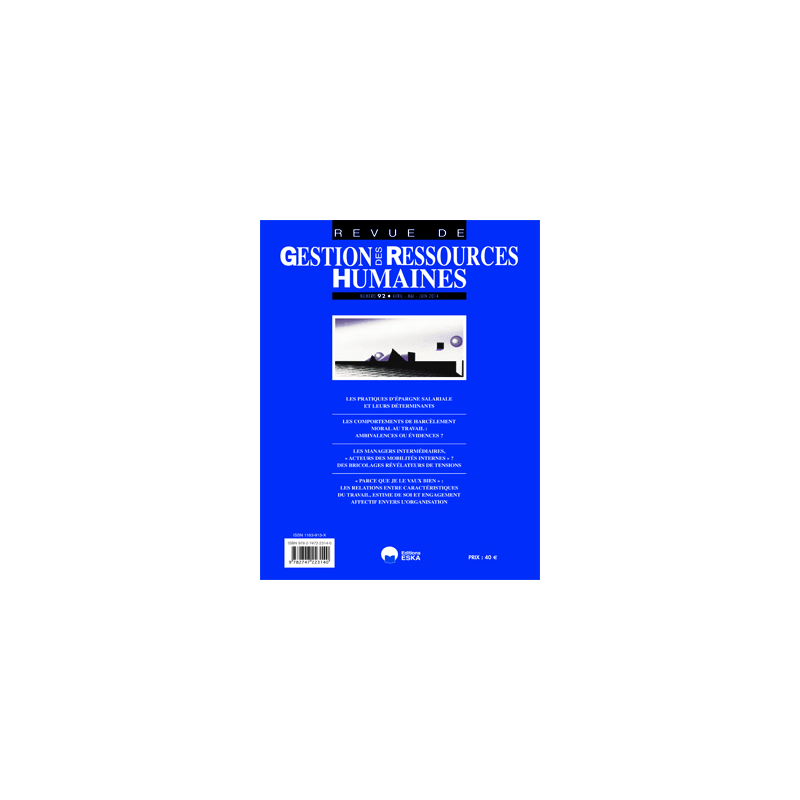



 Security policy
Security policy
(edit with the Customer Reassurance module)
 Delivery policy
Delivery policy
(edit with the Customer Reassurance module)
Bullying at work: Ambiguous behaviors or clear intentions?
Gaëlle DEHARO
ESCE Business School
CRJP Paris 1, expert associée CEDE ESSEC,
programme DMS
Sébastien POINT
EM Strasbourg Business School
Laboratoire HuManiS
(Human and Management in Society) – EA 7308
Abstract
Often depicted as incivility in the workplace, bullying is both a social and a legal issue. This is especially true when we consider the common characteristics of bullying. In order to investigate this narrow boundary, this paper analyses final court of appeals decisions over 12 years. What constitutes a normal versus a bullying situation is decided by the magistrate whose authority helps to impose his/her decision. Our results emphasize that most bullying situations depend on four key factors: sex and job position of the harasser and the bullied, the trigger event, and the denounced behavior. This typology helps to better understand the ways a normal situation may deteriorate sharply until the bullying situation, punishable by law, emerges. The results may help both lawyers and managers in their own respective activities determine whether an ambiguous event qualifies as a bullying situation at work.